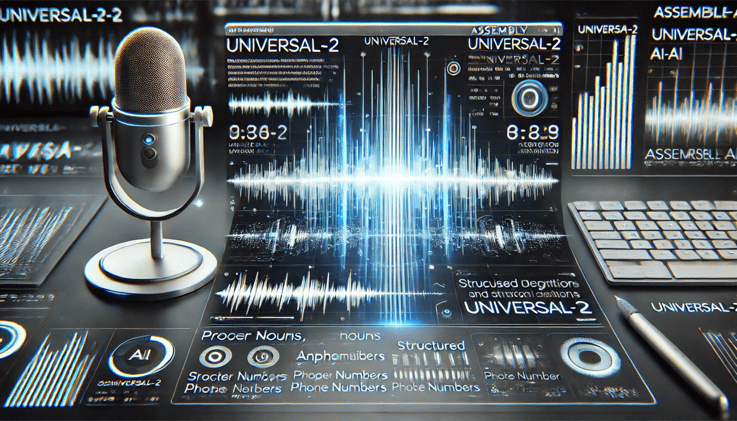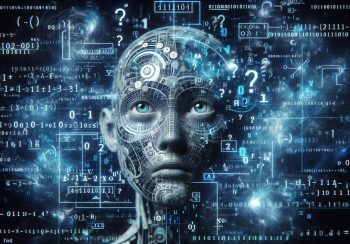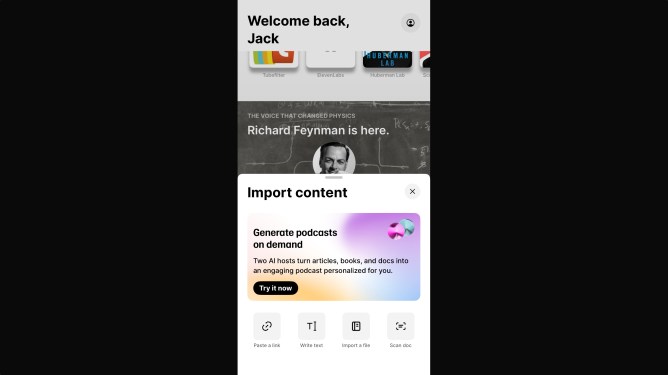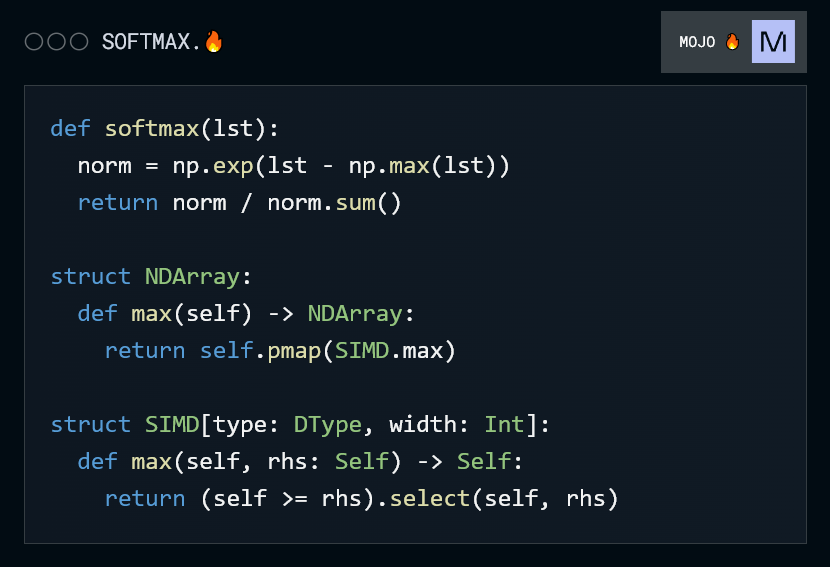AssemblyAI has unveiled its latest speech-to-text AI model, Universal-2, designed to tackle the complexities of human speech with enhanced accuracy and precision. Building on the success of Universal-1, this model introduces improvements in recognizing proper nouns, formatting text, and handling alphanumerics, ensuring that transcriptions are immediately usable for real-world applications.
With a focus on creating structured, actionable data from audio inputs, Universal-2 promises faster workflows and higher-quality insights, making it a go-to solution for businesses relying on precise voice data.
Key Advancements in Universal-2
Universal-2 addresses common limitations of traditional speech recognition models by enhancing the accuracy of critical data elements often prone to errors in transcription. Here are the key improvements:
Proper Noun Recognition
A 24% boost in identifying names, brands, locations, and industry-specific terms, allowing for more personalized and contextually accurate transcriptions.
- Universal-2 can accurately recognize proper nouns, such as company names, people’s names, and specific locations.
- This improvement enables more accurate transcription of audio data, which is essential for applications like sales intelligence, customer support, and healthcare.
Text Formatting
With a 15% improvement, Universal-2 ensures proper punctuation, capitalization, and structuring of elements like emails, dates, and dollar amounts, making transcripts more readable and actionable.
- Universal-2 can accurately format text data, including emails, phone numbers, and addresses.
- This improvement enables users to quickly scan and understand the content of audio transcriptions, reducing the need for manual corrections.
Alphanumeric Accuracy
Achieves 21% better accuracy in handling numbers, such as phone numbers and zip codes, ensuring smoother workflows and reliable data for customer-facing applications.
- Universal-2 can accurately recognize alphanumeric data, including phone numbers, zip codes, and credit card numbers.
- This improvement ensures that audio transcriptions are accurate and reliable, reducing the risk of errors in customer-facing applications.
Enhanced Real-World Usability
Universal-2 was developed to move beyond traditional word error rate (WER) metrics and meet the specific needs of business applications. It focuses on generating properly structured, immediately usable data, reducing the need for manual data corrections in automated systems.
- Universal-2 can accurately parse email addresses, phone numbers, and dates from audio transcriptions.
- This improvement enables users to quickly and easily extract valuable information from audio data, without the need for manual corrections.
Improved User Experience
With a cleaner output, Universal-2 offers end-users more reliable, accurate transcriptions, thereby enhancing customer trust in products and applications that rely on voice data.
- Universal-2 provides users with accurate and reliable transcriptions, which is essential for building trust in products and applications.
- This improvement enables businesses to create more effective sales strategies, improve customer support, and enhance healthcare services.
Real-World Impact for Business Applications
Universal-2’s accuracy improvements have specific benefits for industries that rely on high-quality audio transcriptions for customer engagement, support, and analytics. Here’s how it can transform critical scenarios:
Sales Intelligence
Sales teams can accurately capture competitors’ names, user counts, and timelines from calls, empowering them to prioritize opportunities effectively.
- Universal-2 can accurately recognize industry-specific terms and proper nouns in audio transcriptions.
- This improvement enables sales teams to quickly and easily extract valuable information from audio data, without the need for manual corrections.
Customer Support
Support teams can precisely record product details, error codes, and customer data, eliminating the need for repeated calls and follow-ups.
- Universal-2 can accurately recognize alphanumeric data, including phone numbers, zip codes, and credit card numbers.
- This improvement enables support teams to quickly and easily extract valuable information from audio data, reducing the risk of errors.
Healthcare and Telehealth
Telehealth applications benefit from accurate medication details, insurance codes, and appointment scheduling, reducing administrative tasks and enhancing patient care.
- Universal-2 can accurately recognize industry-specific terms and proper nouns in audio transcriptions.
- This improvement enables healthcare professionals to quickly and easily extract valuable information from audio data, without the need for manual corrections.
Developers and Businesses Can Explore Universal-2’s Capabilities
AssemblyAI provides a free API for developers and businesses interested in exploring Universal-2’s capabilities. By integrating high-precision speech-to-text functionality directly into their applications, they can create more effective sales strategies, improve customer support, and enhance healthcare services.
Universal-2 is the latest innovation from AssemblyAI, a company dedicated to developing cutting-edge AI solutions for various industries. With its advanced capabilities and accurate results, Universal-2 has the potential to revolutionize the way businesses approach audio data analysis and transcription.
Conclusion
AssemblyAI’s Universal-2 speech-to-text model represents a significant breakthrough in natural language processing (NLP) technology. By providing more accurate transcriptions and enhancing real-world usability, Universal-2 offers developers and businesses a powerful tool for creating more effective sales strategies, improving customer support, and enhancing healthcare services.
As the demand for high-quality audio data analysis continues to grow, AssemblyAI’s commitment to innovation and excellence positions them as leaders in the field. With Universal-2 leading the way, the future of conversational AI and voice-driven insights has never looked brighter.
Editor’s Note
This article was created by Alicia Shapiro, CMO of AiNews.com, with writing, image, and idea-generation support from ChatGPT, an AI assistant. However, the final perspective and editorial choices are solely Alicia Shapiro’s. Special thanks to ChatGPT for assistance with research and editorial support in crafting this article.











